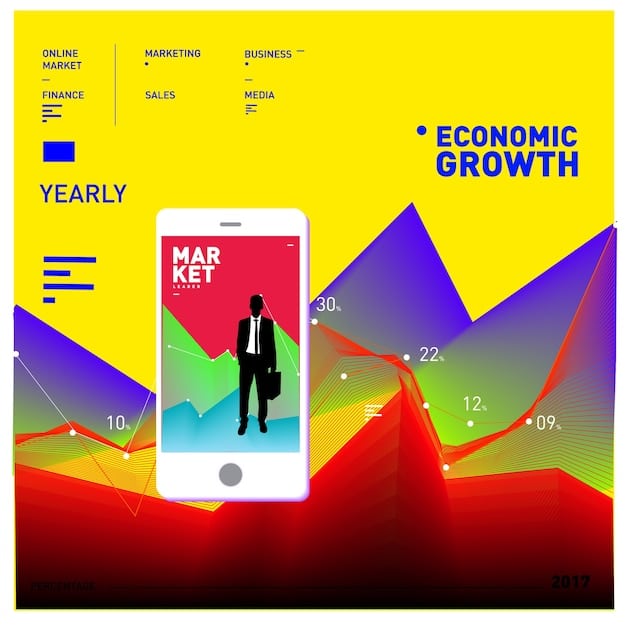Navigating Cancel Culture: Protect Your Brand in 2025

Navigating the complexities of social media backlash and safeguarding brand reputation in an evolving digital landscape requires proactive strategies, understanding the dynamics of public perception, and fostering genuine engagement to mitigate the severe cancel culture consequences that can arise.
The digital age, a realm of unparalleled connection and instantaneous information, has paradoxically given rise to a phenomenon known as cancel culture consequences: how to navigate social media backlash in 2025 and protect your brand. This intricate landscape demands a nuanced understanding, not just of what to avoid, but of how to build resilience and authentic relationships in an environment where reputations can be built and shattered with astonishing speed. Businesses and individuals alike face the dual challenge of maximizing digital presence while simultaneously shielding themselves from the very mechanisms that amplify their reach.
Understanding the Shifting Sands of Cancel Culture
Cancel culture, while not entirely new as a concept of public shaming or ostracization, has been dramatically amplified by the ubiquity of social media. In 2025, it’s no longer just about famous personalities; it can affect small businesses, local entities, and even private citizens. The speed at which a controversy can erupt and spread globally is unprecedented, turning minor missteps into major reputational crises overnight. This hyper-connectivity means that even a single insensitive tweet or a perceived ethical lapse can lead to widespread calls for boycotts, firings, and public apologies.
The nature of “cancellation” itself is fluid. It rarely means complete annihilation from public life, but rather a significant, often painful, period of public denouncement and a tangible impact on an individual’s or brand’s opportunities. These consequences can range from financial losses due to boycotts and loss of partnerships, to severe reputational damage that takes years to repair, and even psychological distress for those directly involved. It highlights a powerful, albeit often chaotic, form of collective consumer and public activism.
The Evolution of Social Media Backlash
In the early days of social media, backlash was often localized and less coordinated. Today, it is a highly organized, often global, phenomenon. Hashtags quickly trend, creating a focal point for collective anger. Advocacy groups, online communities, and even AI-powered sentiment analysis tools can rapidly identify and amplify grievances. This evolution means that brands can no longer react; they must anticipate and proactively build defenses.
- Instant Global Reach: A local misstep can become a global scandal in minutes, transcending geographical boundaries.
- Collective Action: Social media facilitates rapid mobilization, turning individual grievances into massive coordinated campaigns.
- AI and Analytics: Advanced tools are used to track sentiment, identify trends, and even predict potential backlash, empowering both critics and defenders.
- Short Attention Spans: While controversies flare quickly, public attention can also shift rapidly, offering a window for effective, timely responses.
The key takeaway for 2025 is that social media backlash isn’t just about what you say or do, but how it’s interpreted by a diverse, often polarized, global audience. Context is often lost, and intent can be misconstrued, making careful communication paramount.
Navigating this complex environment requires not just reactive strategies but a fundamental shift towards proactive brand building and continuous engagement that fosters loyalty and understanding. It’s about building a reservoir of goodwill that can withstand the inevitable storms of online criticism.
Proactive Strategies for Brand Protection in 2025
In an era where every tweet, post, or endorsement can be scrutinized under a microscope, proactive brand protection is no longer optional; it’s a fundamental pillar of sustainable growth. The best defense against cancel culture is a strong, ethically sound, and transparent offensive strategy. This involves embedding integrity into every facet of your brand, from product development to customer service, and ensuring your online presence reflects these core values consistently.
Brands that thrive in 2025 will be those that prioritize authenticity and accountability. This means not just reacting to criticism, but actively listening to stakeholders, acknowledging mistakes, and demonstrating a genuine commitment to improvement. It’s about building trust long before a crisis hits, so that when challenges arise, your audience is more likely to give you the benefit of the doubt or at least engage in constructive dialogue rather than outright condemnation.
Building a Resilient Brand Identity
A resilient brand identity is built on clear values, consistent messaging, and a deep understanding of your audience. It’s about more than just a logo or a slogan; it’s the sum total of every interaction, every promise kept, and every ethical stand taken. In the context of cancel culture, a strong identity acts as a moral compass, guiding decisions and responses.
- Define Core Values: Clearly articulate your brand’s ethical principles and commitments. These should be more than just words; they should guide your actions.
- Consistency Across Platforms: Ensure your messaging, tone, and visual identity are consistent across all social media channels and traditional media.
- Audience Understanding: Deeply understand the demographics, psychographics, and evolving values of your target audience to anticipate their concerns.
- Transparency by Default: Be open and honest about your business practices. Proactive disclosure can prevent accusations of hidden agendas later.
Investing in your brand’s reputation should be an ongoing process, not a reaction to impending threats. This involves regular audits of your digital footprint, training employees on responsible social media use, and fostering a culture internally that aligns with your public persona. A unified message, delivered by a unified team, is far more powerful and less susceptible to fragmentation that can be exploited by critics.

Proactive brand protection also extends to monitoring online conversations. Utilizing advanced listening tools to track mentions of your brand, industry trends, and emerging social issues can provide early warnings of potential problems. This foresight allows for timely intervention, whether it’s through clarifying a misstatement, issuing a pre-emptive apology, or adjusting a campaign that might be perceived negatively. The goal is to identify ripples before they become tidal waves, safeguarding your brand’s integrity and long-term viability in a volatile digital landscape.
Developing a Robust Crisis Communication Plan
The inevitability of encountering some form of negative public sentiment online means that a robust crisis communication plan is not a luxury, but a necessity. Relying on ad-hoc responses in the midst of a crisis is akin to building a bridge as you’re crossing it; it’s inefficient, risky, and often leads to further damage. A well-prepared plan provides a clear roadmap, enabling rapid, coherent, and effective responses that can mitigate harm and even turn a negative situation into an opportunity for demonstrating accountability and leadership.
Such a plan must encompass more than just external messaging. It needs to define internal roles, establish clear lines of communication, and outline protocols for data collection and analysis during a critical event. The ability to act swiftly, speak with a unified voice, and demonstrate genuine empathy can make the difference between a temporary setback and a prolonged brand nightmare. Planning for the worst allows you to react optimally in real-time, under pressure.
Key Components of an Effective Plan
An effective crisis communication plan is multifaceted, encompassing pre-crisis preparation, in-crisis response, and post-crisis analysis. It’s a living document that requires regular review and updates to remain relevant in a rapidly changing digital ecosystem.
- Designated Crisis Team: Identify key individuals responsible for managing the crisis, including PR, legal, social media, and executive leadership.
- Protocol for Social Listening: Establish a continuous monitoring process to detect negative sentiment and potential crises early.
- Pre-approved Messaging & FAQs: Draft holding statements, crisis-specific FAQs, and response templates to ensure consistency and speed.
- Communication Channels: Determine which platforms will be used for communication (e.g., official website, specific social media channels) and the type of content for each.
- Spokesperson Training: Train designated spokespersons on how to address difficult questions, maintain composure, and deliver key messages effectively.
- Post-Crisis Review: Conduct a thorough review after each crisis to learn from the experience and improve the plan for future incidents.
Crucially, a crisis communication plan must also include social media specific protocols. This means understanding how different platforms behave during a crisis, the typical speed of information dissemination, and the audience demographics unique to each. For example, a response on X (formerly Twitter) might need to be concise and immediate, while a statement on LinkedIn could be more detailed and consultative.
Finally, practicing crisis scenarios through simulations or tabletop exercises can reveal weaknesses in the plan before a real event occurs. This hands-on experience allows teams to understand their roles, refine their communication processes, and build confidence in their ability to navigate high-pressure situations effectively. The goal is to move from reactive panic to strategic and prepared response, ensuring that the brand maintains control of its narrative as much as possible, even amidst chaos.
Navigating Social Media Backlash: Best Practices
When the storm of social media backlash hits, reactive speed grounded in best practices becomes paramount. It’s not just about what you say, but how quickly and authentically you say it. A delayed or tone-deaf response can exacerbate a situation, turning a potentially contained incident into a full-blown reputational disaster. The essence of effective navigation lies in a blend of swift action, genuine empathy, and strategic communication that aims to de-escalate tension and rebuild trust.
It’s crucial to remember that social media audiences often demand immediate accountability. While it’s tempting to retreat or craft a perfect statement, a well-timed, imperfect but sincere acknowledgment of the issue often fares better than a polished, delayed denial. The goal is to show that you are listening, you understand the concerns, and you are taking the situation seriously, even if all the facts are not yet available.
Effective Response Strategies
An effective response to social media backlash involves a series of calculated steps designed to address concerns, provide clarity, and work towards resolution. This requires a coordinated effort, guided by the prepared crisis communication plan.
- Listen and Assess: Before responding, thoroughly analyze the situation. Understand the core grievance, the sentiment driving it, and the key stakeholders involved. Who are the primary voices, and what are their specific demands?
- Respond Swiftly, But Thoughtfully: Speed is important, but a rushed, ill-conceived response can be worse than a slightly delayed, well-considered one. Aim for a quick initial acknowledgment followed by a more detailed statement if necessary.
- Be Empathetic and Apologetic (If Necessary): If a mistake was made, issue a sincere, unequivocal apology. Avoid conditional apologies (“if anyone was offended”) that shift blame. Empathy helps humanize your brand.
- Take Responsibility: Clearly state that your brand takes responsibility for its actions or statements. This builds trust and shows maturity.
- Provide Solutions or Next Steps: Outline specific actions you will take to address the issue. What steps are being taken to rectify the problem? This demonstrates commitment to resolution.
- Move Conversations Offline: For individual complaints or complex issues, try to move the conversation to private channels (DM, email, phone) to resolve them personally and prevent public escalation.
Crucially, avoid arguing, deleting comments (unless they are spam or pose a genuine threat), or engaging in defensive posturing. The internet remembers everything, and attempts to erase criticism can backfire, leading to accusations of censorship and further outrage. Instead, focus on transparency and a commitment to learning and improvement. Engaging constructively, even with critics, can sometimes turn adversaries into advocates, or at least neutralize their opposition.
Ultimately, navigating social media backlash is about demonstrating genuine integrity. The actions taken during a crisis speak volumes about a brand’s character. By adhering to these best practices, brands can not only survive cancel culture but emerge stronger, having proven their resilience and commitment to ethical conduct in the digital public square.
Leveraging Post-Crisis Recovery and Learning
Emerging from the immediate impact of social media backlash is not the end of the journey; it’s the beginning of post-crisis recovery. This phase is critical for rebuilding trust, repairing brand reputation, and most importantly, learning valuable lessons that can prevent future incidents. A failure to engage in thoughtful recovery and continuous improvement can leave a brand vulnerable to repeat offenses or prolonged negative public perception. Recovery is an active process that requires strategic communication, consistent action, and internal reflection.
The goal is not just to return to business as usual, but to emerge as a more resilient, responsive, and ethically fortified entity. This involves demonstrating tangible changes, communicating those changes effectively, and fostering ongoing dialogue with your audience. Silence or a return to old habits after a crisis can be just as damaging as the initial misstep, signaling a lack of genuine commitment to improvement.
Strategies for Rebuilding Trust and Reputation
Rebuilding trust is a marathon, not a sprint. It demands sustained effort and a clear demonstration of changed behavior. Tangible actions speak louder than words, especially when a brand’s credibility has been questioned.
- Implement Stated Changes: Follow through on every promise made during the crisis response. If you pledged to revise a policy or improve a product, do so promptly and communicate the implementation.
- Consistent Positive Communication: Shift the narrative by consistently sharing positive news, community involvement, and ethical initiatives that align with your core values. Show, don’t just tell, your commitment.
- Engage with Critics (Respectfully): Don’t shy away from past criticism. Address it transparently if it resurfaces, and focus on how the brand has learned and grown. Engage in constructive dialogue where appropriate.
- Solicit Feedback: Actively seek feedback from customers and stakeholders on your recovery efforts. This shows humility and a commitment to continuous improvement.
- Support Employees: Don’t forget the internal impact of a crisis. Support and reassure your employees, as they are often your most important brand ambassadors during recovery.
Beyond external communication, the post-crisis phase is a crucial period for internal learning. Conduct a thorough internal review of the incident, analyzing what went wrong, why it happened, and how the response could have been improved. This includes examining communication flows, decision-making processes, and employee training programs. Document these learnings and integrate them into updated crisis plans and operational guidelines.

Furthermore, consider implementing long-term initiatives that demonstrate your brand’s commitment to social responsibility and ethical conduct. This could involve partnering with advocacy groups, investing in community programs, or transparently reporting on diversity and inclusion efforts. These actions, when genuinely undertaken, can move the conversation beyond the immediate crisis and position your brand as a leader with strong values.
By leveraging the post-crisis period effectively, brands can not only recover from cancel culture consequences but emerge with a stronger, more authentic identity, better equipped to navigate the complexities of the digital future.
Legal and Ethical Considerations in Navigating Backlash
The arena of social media backlash is not merely a public relations challenge; it is fraught with significant legal and ethical considerations that brands and individuals must skillfully navigate. While freedom of speech is a cornerstone, the line between protected expression and defamation, harassment, or incitement is often blurred in the digital space. Simultaneously, victims of cancel culture face the ethical dilemma of how to respond without compounding their problems or descending into counter-productive retaliation.
Understanding the legal landscape that governs online interactions is paramount. This includes laws around defamation, privacy, intellectual property, and even data security, all of which can come into play during a heated online controversy. Simultaneously, brands have an ethical obligation to their stakeholders—employees, customers, and investors—to uphold principles of fairness, transparency, and responsibility, even when under intense public scrutiny.
Balancing Free Speech and Accountability
The tension between individual free speech and the demand for accountability is at the heart of many cancel culture incidents. Brands must tread carefully, respecting the public’s right to express dissent while also defending against malicious or factually incorrect claims that can harm their reputation or operations.
- Defamation vs. Opinion: Understand the legal distinctions between factual defamation (false statements of fact that harm reputation) and protected opinion. Legal counsel is essential here.
- Employee Conduct: Develop clear social media policies for employees that balance their right to personal expression with protecting the brand’s image and confidential information.
- Cease and Desist Letters: Use legal measures cautiously. While appropriate for clear cases of defamation or harassment, overly aggressive legal action against critics can often backfire, leading to a “Streisand effect.”
- GDPR and Privacy: Be mindful of data privacy regulations when collecting and processing information related to online criticism.
Ethically, brands should also consider the broader societal impact of their responses. Engaging in bad-faith arguments, retaliating against individuals, or attempting to silence legitimate criticism can erode public trust further. Instead, a commitment to ethical conduct dictates transparency, respect, and a willingness to engage constructively, even with those holding opposing views.
Furthermore, the ethical considerations extend to the “cancelers” themselves. While social media can be a powerful tool for holding entities accountable, it also carries the risk of mob mentality, disproportionate punishment, and the spread of misinformation. Brands caught in the crossfire must navigate this complex moral terrain, demonstrating their own ethical compass while not enabling or fueling harmful online behavior.
Consulting with legal experts specializing in digital media law is advisable for any brand or individual facing significant social media backlash that crosses into potentially legal territory. A combined legal and ethical approach ensures that responses are not only defensible in the court of public opinion but also sound in a court of law, providing a comprehensive protective shield in an increasingly litigious digital environment. This dual focus ensures that decisions are robust, principled, and ultimately contribute to a more sustainable brand future.
The Future of Cancel Culture in 2025 and Beyond
As we delve deeper into 2025, the landscape of cancel culture continues to evolve, reflecting broader shifts in societal values, technological advancements, and the dynamics of online activism. While some predict its decline due to “cancel fatigue” or a greater understanding of its nuances, others argue it will merely morph into more sophisticated forms, driven by increasingly powerful AI, hyper-personalization, and a continued demand for corporate and individual accountability. Understanding these potential trajectories is crucial for brands aiming to remain resilient and relevant.
The future may see a move away from broad, collective condemnation towards more targeted, nuanced pressures, possibly influenced by micro-communities and niche ethical concerns. The underlying desire for transparency and justice, however, is unlikely to wane. Brands must prepare for an environment where public scrutiny is a constant, and where past actions, no matter how distant, can always resurface.
Anticipating Trends and Adapting
Adapting to the future of cancel culture requires foresight and agility. Brands need to move beyond reactive damage control and embrace a forward-thinking approach that integrates ethical considerations and social responsibility into their core business model. This means not just predicting trends, but shaping them where possible.
- Increased Personalization of Backlash: Future cancel culture may be less about global boycotts and more about highly personalized, niche-specific disapproval that targets individual brands or products within specific consumer segments.
- AI and Deepfake Risks: The rise of advanced AI could lead to more sophisticated misinformation campaigns or deepfakes, making fact-checking and identity verification a greater challenge for brands to navigate themselves out of fabricated controversies.
- Values-Driven Consumption: Consumers, especially younger generations, are increasingly making purchasing decisions based on a brand’s social and ethical stances. Brands that authentically align with progressive values may be more resilient.
- Regulatory Pressures: Governments globally may introduce more stringent regulations regarding online speech, data privacy, and brand accountability, impacting how crises are managed.
- Focus on Systemic Issues: While individual actions will still be scrutinized, there might be a greater emphasis on calling out systemic issues within corporations or industries, moving beyond individual “cancellations” to broader movements.
Furthermore, the concept of “restorative justice” might gain traction in the cancel culture discourse. Instead of outright cancellation, there might be a growing demand for pathways to redemption, education, and genuine amends. Brands that are transparent about their mistakes, commit to learning, and actively demonstrate positive change might find greater acceptance and forgiveness from the public.
The ultimate protection against the evolving forms of cancel culture lies in cultivating true authenticity, building strong, reciprocal relationships with stakeholders, and consistently acting with integrity. Brands that lead with their values, demonstrate genuine empathy, and are committed to continuous improvement will be best positioned to thrive in an unpredictable digital future, turning potential threats into opportunities for stronger connections and lasting trust.
| Key Aspect | Brief Description |
|---|---|
| 🛡️ Proactive Protection | Build a resilient brand identity with clear values and consistent, transparent communication to deter backlash. |
| 🚨 Crisis Planning | Develop a robust crisis communication plan defining roles, messaging, and channels for swift, unified responses. |
| 🗣️ Effective Response | Respond swiftly, empathetically, taking responsibility and outlining solutions to de-escalate and rebuild trust. |
| 📈 Post-Crisis Learning | Implement changes, communicate positive actions, and conduct internal reviews to grow from challenges. |
Frequently Asked Questions About Cancel Culture
Cancel culture refers to the practice of withdrawing support for public figures or companies after they have said or done something objectionable. It has evolved from localized calls for boycotts to globally amplified social media campaigns, enabled by hyper-connectivity and the rapid spread of information, making swift and coordinated public backlash more common and impactful across various sectors.
Proactive protection involves building an authentic and resilient brand identity based on clear ethical values. This includes consistent messaging across all platforms, deeply understanding your audience’s values, practicing transparency, and regularly auditing your digital footprint to address potential issues before they escalate into larger controversies online.
An effective crisis plan typically includes forming a dedicated crisis team, establishing social listening protocols, preparing pre-approved messaging and FAQs, defining communication channels, and training spokespersons. Crucially, it should also detail steps for post-crisis review and learning, ensuring continuous improvement in response strategies.
Best practices for responding to backlash involve listening intently to assess the situation, responding swiftly and empathetically, taking clear responsibility for any missteps, and outlining concrete solutions or next steps. It’s also vital to avoid deleting comments unless harmful, resisting defensive arguments, and trying to move complex issues to private channels for resolution.
Legal considerations involve understanding defamation laws, privacy rights, and employee conduct in digital spaces. Ethically, brands must balance public criticism with a commitment to transparency, fairness, and accountability. This often means seeking legal counsel for severe cases while maintaining an ethical stance that prioritizes genuine understanding and responsible engagement over retaliation or silence.
Conclusion
Navigating the complex and often unforgiving currents of cancel culture in 2025 demands more than just damage control; it requires a deep-seated commitment to transparency, authenticity, and continuous evolution. While the digital landscape presents formidable challenges, brands that proactively build resilient identities, equip themselves with robust crisis communication plans, and prioritize genuine engagement with their audiences are best positioned not only to survive but to thrive. The future belongs to those who view public scrutiny not as an insurmountable threat, but as an ongoing opportunity to strengthen their values, adapt their practices, and ultimately, fortify the trust that underpins lasting brand integrity in an interconnected world.





